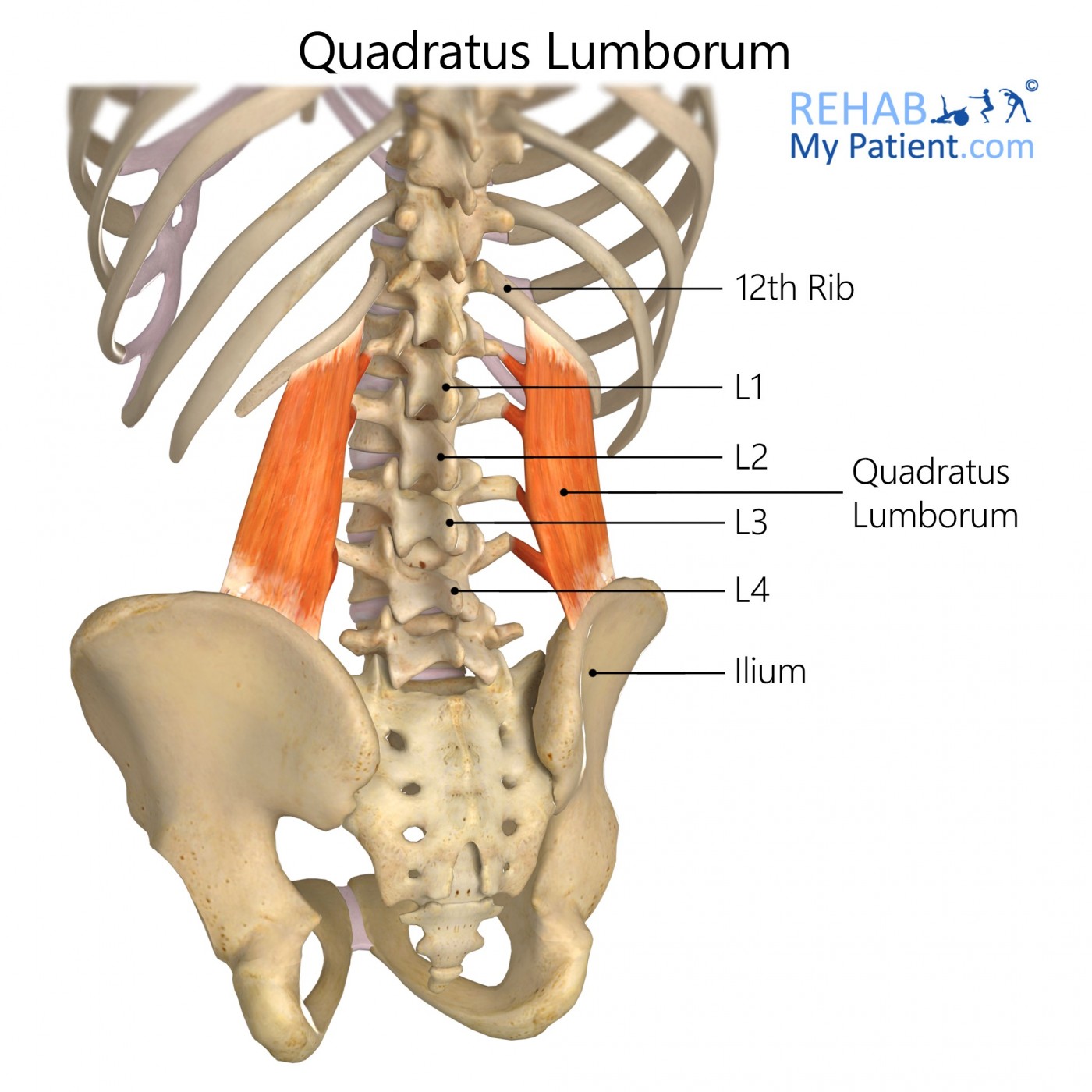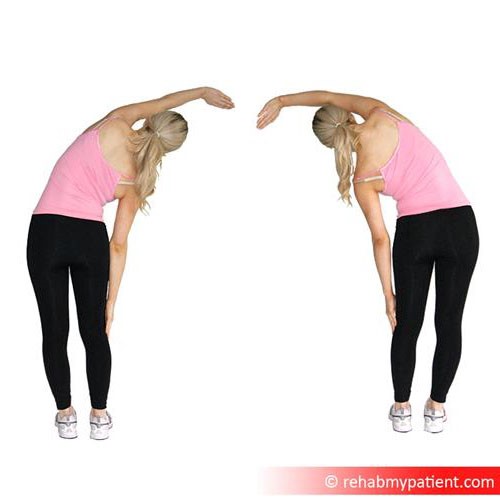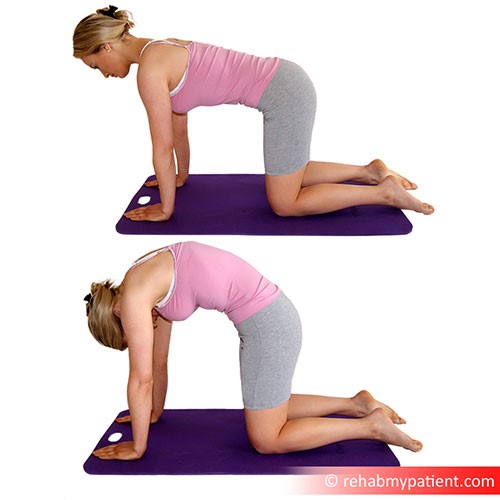
General information
The Quadratus lumborum muscle is located in the lower part of the back. It boasts a quadrilateral and irregular shape and it is broader at the base than it is at the top.
Literal meaning
Square loin.
Interesting information
Injuries to the quadratus lumborum are becoming more common as more people have work environments which require them to sit for long periods of time at a computer. Most do not utilise proper posture in these situations, and do not sit in chairs that encourage proper support and positioning of the body. Pain is often located in the lower back, hips and into the gluteus region. Treatments often include alternating between icing and heating of the affected area, rest, deep-tissue massage and taking anti-inflammatory medications for pain and swelling.
Origin
Posterior iliac crest.
Insertion
Medial half of the twelfth rib and the transverse process for the lumbar vertebrae.
Function
Fixes the twelfth rib to provide stabilization to the diaphragm during inspiration.
Extends the lumbar vertebrae.
Lateral flexes the vertebral column.
Nerve supply
Subcostal nerve T12.
Branches out of the ventral rami L2-L3.
Iliohypogastric and the ilioinguinal nerve L1.
Blood supply
Subcostal artery.
Lumbar branch out of the iliolumbar artery.
Lumbar arteries.
Artery lumbalis ima out of the median sacral artery.

Relevant research
Myofascial pain syndrome is commonly caused from local pains that are the direct result of trigger points that are located in the muscle, tendinous insertions or fascia. As many as 95 percent of individuals who have chronic pain disorders will suffer with this particular pain. This syndrome presents itself as restriction in the range of motion, referred patterns of pain, stiffness and autonomic dysfunction. Most of the time, the underlying cause is attributed to an imbalance of the muscles. A complete examination of the condition will help determine what type of rehabilitation program is necessary. Repeated trigger points will need to be avoided.
Malanga, Gerard A. and Cruz Colon, Eduardo J. (2010). “Myofascial Low Back Pain: A Review”. Physical Medicine and Rehabilitation Clinics of North America, Vol. 21, Is. 4, 711-724.
Quadratus lumborum exercises

Standing stretch
Begin the exercise with the legs straight and the feet together. Raise the hands above the head with the arms straightened. It is imperative that the arms are kept straight during the stretch. Stretch the arms to the right slightly and bend from the hip. Hold the pose for 30 seconds before switching to the other side. Repeat the exercise three times for each side of the body.

Cat cow pose
Go to the ground on the hands and knees with hips bent at a 90-degree angle so the torso is parallel to the ground. Round the back until it appears like a cat stretching. Hold the rounded position for five seconds and return to a neutral position. Flex the lower back and hold the position for five seconds. Repeat the movements for a total of one minute.
Sign Up
Sign up for your free trial now!
Get started with Rehab My Patient today and revolutionize your exercise prescription process for effective rehabilitation.
Start Your 14-Day Free Trial